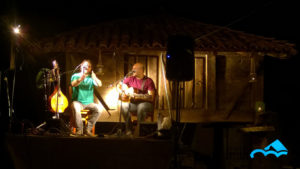The hórreo through the ages
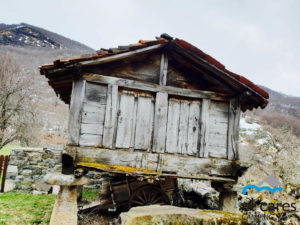
The hórreos of Valdeón no longer store food, but they harbor an indelible antiquity and a very picturesque beauty that invades and transports any spectator.
The Valdeón Valley preserves 83 hórreos, which show a variety of structures. Their peculiar shape, as well as the noble materials with which they were built, remind us of past times.
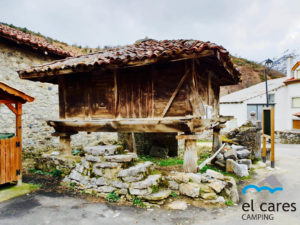
The age of these constructions is such that as early as the first century B.C. Marcus Terentius Varron (116-27 B.C.) mentioned them in his writings, describing them:
“Others build in their fields some
granaries suspended above the ground, as in Hispania Citerior and in some of the
Apulian counties. These barns are ventilated not only by the air that
penetrates through the sides, through the windows, but also through the one that runs
below the floor of the same”..
Rodent control
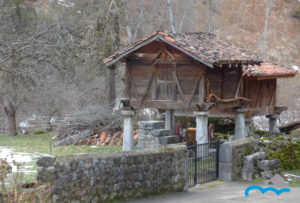
A hórreo is a construction designed to store and conserve foodstuffs away from humidity and animals (especially mice and other rodents).
These constructions extend throughout most of northern Spain and Portugal. In areas where the early arrival of a long, cold and wet winter forces early harvests.
The Valdeón Valley style brings new elements that we had not seen before, such as the existence of more than one door in some cases, as well as the window in some hórreos.
Valdeón, land of hórreos (granaries)
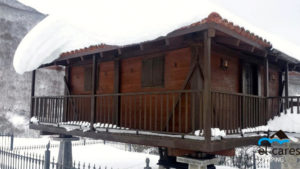
In Santa Marina de Valdeón there are currently 11 hórreos, predominantly wooden hórreos, covered with tiles, in some cases gabled and in others four-sided.
We can also enjoy a hórreo-apartment conditioned for the stay, with all the details to spend a romantic evening.
In Prada we can still find 14 hórreos, one of them is of recent construction.
In Caldevilla there are 13 hórreos.
In Soto 16 is the village with more hórreos of the whole council. The most remarkable thing about the hórreos of Soto de Valdeón is the age of some of them; in particular, two of them are probably among the longest-lived in these mountains.
In Posada de Valdeón there are 10 hórreos.
Los Llanos has 12 hórreos. A singularity of Los Llanos is to have 3 hórreos that use uralite as roofing material.
Cordiñanes currently has six hórreos.
And Cain has only one granary.
On its structure, practical architecture
Regarding their structure, we can say that they are suspended in the air on “pegollos“, quadrangular pillars that taper upwards.
The pegollos rest on bases, stones that prevent them from being in contact with the humidity of the ground in the case of wooden pegollos. The torna-ratos, flat stones that prevent mice and other animals from climbing and gaining access to the interior of the hórreo, rest on the pegollos.
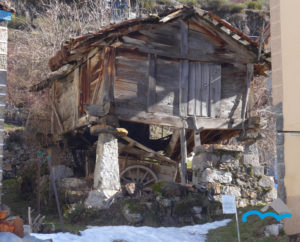
Some of them have more than one access door, which suggests the existence of interior divisions.
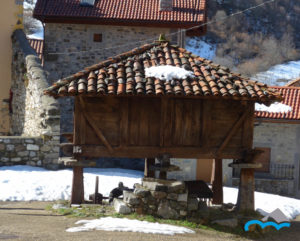
To access them they have a ladder, the plateau of the ladder is about 50 centimeters lower than the floor of the hórreo in order to avoid access to the hórreo through the stairs by rodents and other vermin.
A living museum, the challenge of maintaining it
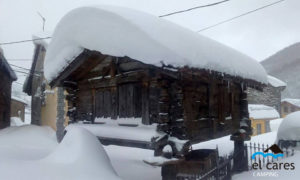
Despite the fact that nowadays it is not a very practical construction, since nowadays it has remained, in most cases, as a decorative element, and in some other cases, abandoned to its fate. When we come across the hórreos, one can imagine, more vividly, the customs and way of life that took place in other times and with other means.
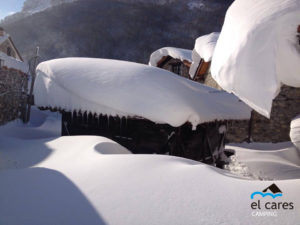
We should be grateful that the residents of Valdeón make an effort to keep them in good condition. They face a tough challenge due to the passage of time and the extreme weather conditions in which they find themselves.
Occasionally, they also serve as improvised stages. In the festivities of Santa Marina de Valdeón, in 2015, Tarna, a folk music group, offered us a charming concert in the town square.
